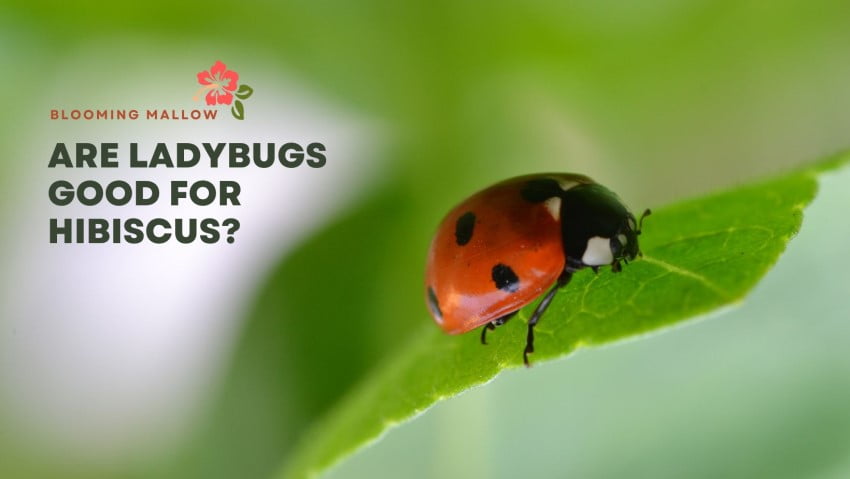
Ladybugs have managed to inhabit almost every kind of environment on earth – from regions with temperatures as low as 4°C to the aridest deserts. And these ladybugs not only look magnificent but also perform outstanding tasks in nature throughout their lives.
So, if you’re wondering whether or not their presence in your hibiscus garden is a positive thing – we have some great news for you! Read on to learn more.
Are Ladybugs Considered Pests?
Of all the American species, there are only a few that are considered pests. The twenty-four spotted ladybug, for instance, feeds on the leaves of various plants such as dahlias, alfalfa, clover, and potatoes. However, it is extremely rare for plants to be severely damaged by these lady beetle species.
Likewise, the multicolored Asian lady beetle, which resembles other known ladybugs found throughout the United States, feeds on pests in fruit trees and crops, but oftentimes they can also be seen hovering around plants.
These Asian ladybeetles feature an M-shaped pattern on the head and around 19 spots on the body in most cases.
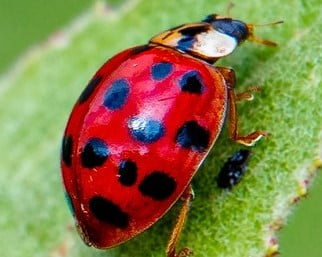
Surprisingly, this particular species of the ladybug was imported (intentionally) from Asia in 1916 as it preys on pests, including aphids.
Do note however, that if they are alarmed or pinched, they may respond with a defensive reaction called “reflex bleeding” in which a yellow, odorous fluid oozes from the joints of the legs. This reaction generally discourages predators from eating them. But indoors, this liquid can leave stains on walls and floors.
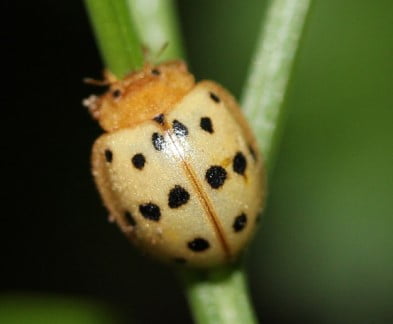
The Mexican bean beetle (Epilachna varivestis), on the other hand, is a species of ladybug that loves vegetables and is considered an agricultural pest. So, make sure to get rid of them (oval and copper colored, with 16 black spots), especially if you grow vegetables and fruits alongside Hibiscus plants.
In summary, ladybugs maintain a fairly peaceful coexistence with humans. But if they proliferate in some areas or if they decide to enter the house, they can be treated as pests. Other than that, they are completely harmless and will not affect the life cycle of your Hibiscus plant.
And in case you’re wondering if these ladybugs transmit any known diseases to humans – an article in the journal Allergy and Asthma Proceedings has clearly debunked this as a misassumption.
Do Ladybugs Eat Hibiscus Plant?
Far from being dangerous to the Hibiscus, these ladybugs are very useful in the garden. This becomes evident when one looks at what they eat. At the top of the list are aphids, closely followed by mealybugs and spider mites. In fact, any kind of pest that you might have heard of preying on Hibiscus will end up in the stomach of these ladybugs!
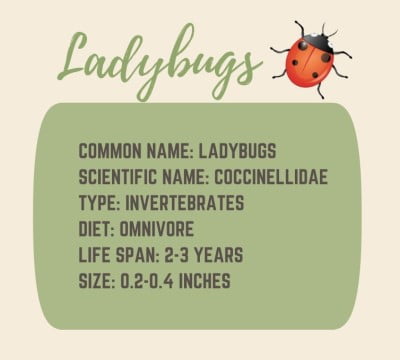
An adult ladybug manages to eat up to 5,000 aphids in its lifetime – which is an average of two to three years. Its hunger for aphids seems insatiable, which is why ladybugs are often found near heavily infested Hibiscus plants.
And while the adult ladybugs are easy to recognize, do not be confused between the young ladybugs and pests! Indeed, in the form of larvae, they are not quite so easy to identify.
A ladybug larva looks slightly different depending on the species and stage of development. It can be between 1.5 and 15 millimeters long and is usually black, gray, brown, or sometimes yellow in color. Also, some larvae may have a smooth texture, while others may not.
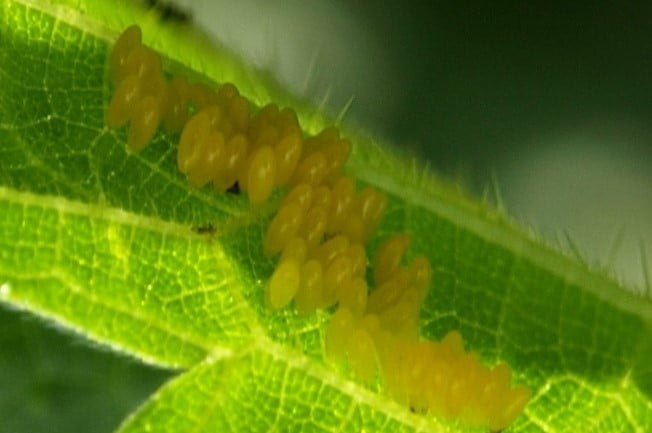
Ladybug larvae are also voracious predators and feed primarily on aphids. If there are enough aphids on your Hibiscus, these larvae can eat up to 40-50 per day.
For this reason, ladybugs are considered especially helpful and valuable to Hibiscus, which unfortunately is one of the most aphid-prone flowering plants.
How To Attract Ladybugs On Hibiscus?
Once all the aphids are eliminated, the count of ladybugs in your hibiscus garden might decrease. This is because ladybugs are very sensitive to the scarcity of food. And once they are gone, this will make your Hibiscus more susceptible to aphids and mealybugs the following season. For this very reason, many gardeners encourage ladybugs to stay by keeping some beetle-friendly plants.
The best way to attract ladybugs in your hibiscus garden is by maintaining a natural habitat that provides shelter, especially in the winter. So, leave piles of leaves and wood in your yard to serve as a winter home. When spring comes, they’ll be hungry – and looking forward to lots of tasty aphids.
Newbie gardeners can attract them by planting a few marigold or geranium plants and by avoiding any chemical pesticides. And although you can artificially increase their population by buying them from garden stores, we recommend doing this organically by welcoming native ladybugs.
Conclusion: Can Ladybugs Harm Hibiscus?
Ladybugs are aphid-loving beetles. In addition to aphids, they also feed on mites, pollen, nectar, mealybugs, fruit flies, molds, and fungi. But under no circumstances, will they try to eat Hibiscus leaves or flowers. However, there is always a rotten apple – among their species, there are a few that feed mainly on green leafy vegetables. But the good news is that none of them particularly like to eat Hibiscus plants. So, there is nothing to worry.
Gardening Tip: Keep your garden, patio, or balcony free of insecticides and pesticides to create a friendly atmosphere for ladybugs so that your Hibiscus can thrive naturally.
In addition, ladybugs are very adaptable. This means that they adapt to new species of pests and find a way to include them in their diet as well. Plus, they act as pollinators. So, it’s really a win-win situation in every case.
Remember, even the tiniest things can be miracles. Happy Gardening! 😊

